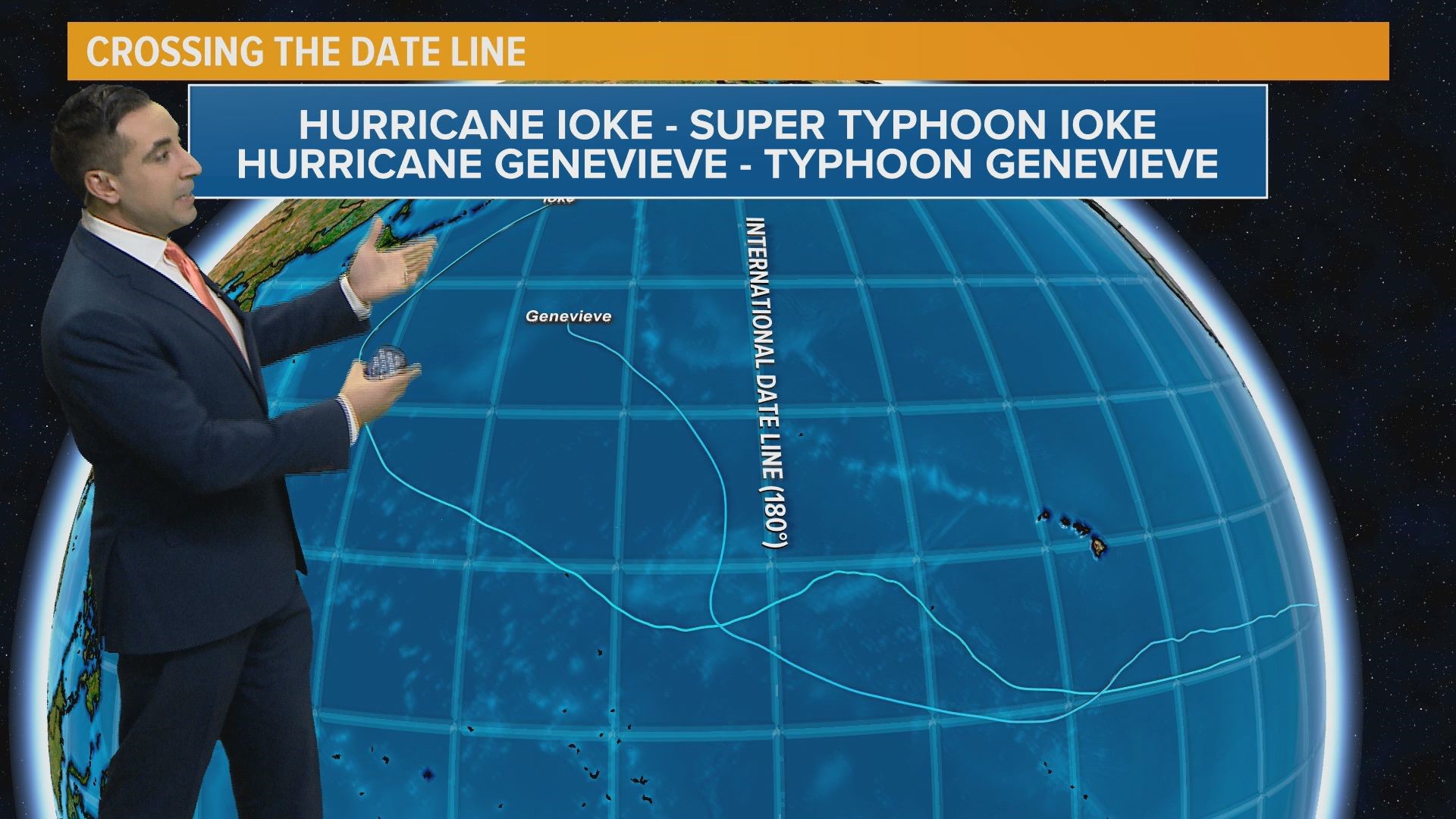NORFOLK, Va. — Off the bat let's be clear: a hurricane and a typhoon are the same type of storm. Both have sustained winds of at least 74mph.
The difference is where they develop.
The naming of such storms depends on the ocean basin in which said storm obtains winds of hurricane/typhoon strength.
So, in which parts of the world do we call these hurricanes? If the storm develops in the Atlantic Ocean, Eastern or Central Pacific Ocean, it is called a hurricane.
If the storm develops in the Western Pacific -- that's west of the International Date Line or 180° longitude -- then it is named a typhoon.
If the storm grows so strong that it obtains winds in excess of 111 mph-129 mph then it becomes a Category 3 major hurricane or in the Western Pacific, if winds become 150 mph or stronger, a super typhoon.
But what happens if a storm develops in one basin, survives long enough that it enters a totally different basin? It has happened before and will happen again.
If a hurricane develops in the Central Pacific, sustains minimal winds of 74 mph and crosses that International Date Line, then it will warrant a name change to a typhoon. If a typhoon develops in the Western Pacific and crosses the International Date Line moving East then it will obtain a title of hurricane.

